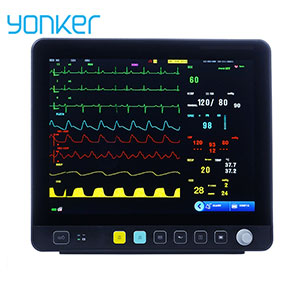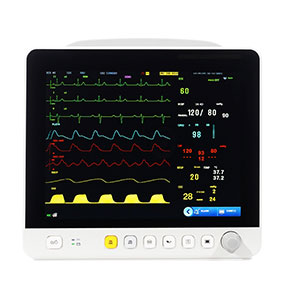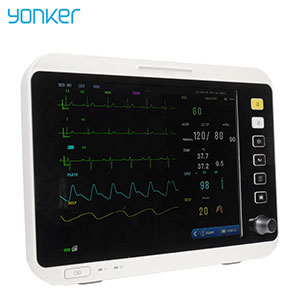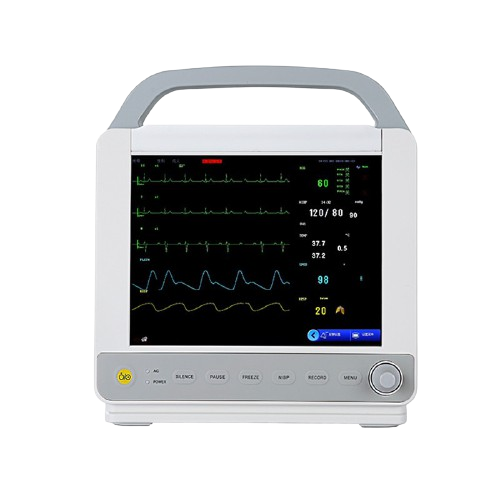The patient monitor is used to monitor and measure a patient's vital signs including heart rate, respiration, body temperature, blood pressure, blood oxygen saturation and so on. Patient monitors usually refer to bedside monitors. This kind of monitor is common and widely used in ICU and CCU in hospital. Look at this photo of Yonker multi-parameter 15 inch patient monitor YK-E15:
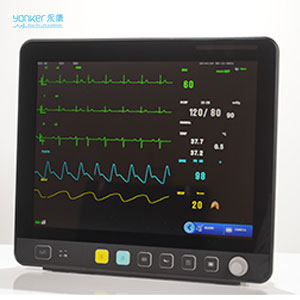
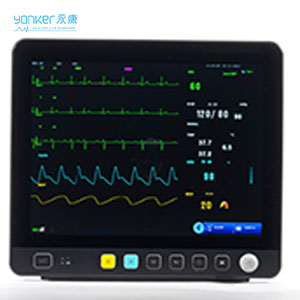
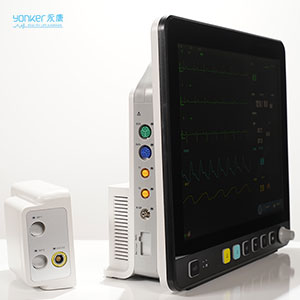
Electrocardiograph: displayed on the patient monitor screen is ECG and show the main parameter heart rate, which refer to the heart beats per minute. The normal range of heart rate show on the monitor is 60-100bpm, under 60bpm is bradycardia and above 100 is tachycardia.Heart rate are different by age, gender and other biological condition. Neonatal heart rate can reach over 130bpm . Adult women generally heart rate are faster than adult men. People who do a lot of physical work or with regular exercise have a slower heart rate.
Respiratory rate: displayed on the patient monitor screen is RR and show the main parameter respiration, which refer to the breaths number of a patient takes per unit of time. When breathing calmly, neonates RR are 60 to 70brpm and adults are 12 to 18brpm. When in a quiet state, adults RR are 16 to 20brpm, the breathing movement is uniform, and the ratio to the pulse rate is 1:4
Temperature: displayed on the patient monitor screen is TEMP. The normal value is less than 37.3℃, if the value is over 37.3℃, it indicates a fever. Some monitors do not have this parameter.
Blood pressure: displayed on the patient monitor screen is NIBP(non-invasive blood pressure) or IBP(invasive blood pressure). Normal ranger of blood pressure can be refer to systolic blood pressure should between 90-140mmHg and diastolic blood pressure should between 90-140mmHg.
Blood oxygen saturation: displayed on the patient monitor screen is SpO2. It is the percentage of the volume of oxygenated hemoglobin (HbO2) in blood to the total hemoglobin (Hb) volume, that is the concentration of blood oxygen in blood. Normal SpO2 value genereally should not be less than 94%. Under 94% is regarded as insufficient oxygen supply. Some scholars aslo define SpO2 less than 90% as the standard of hypoxemia.
If any value show on the patient monitor below or above the normal range, call the doctor immediately to examine the patient.
Post time: Mar-18-2022


